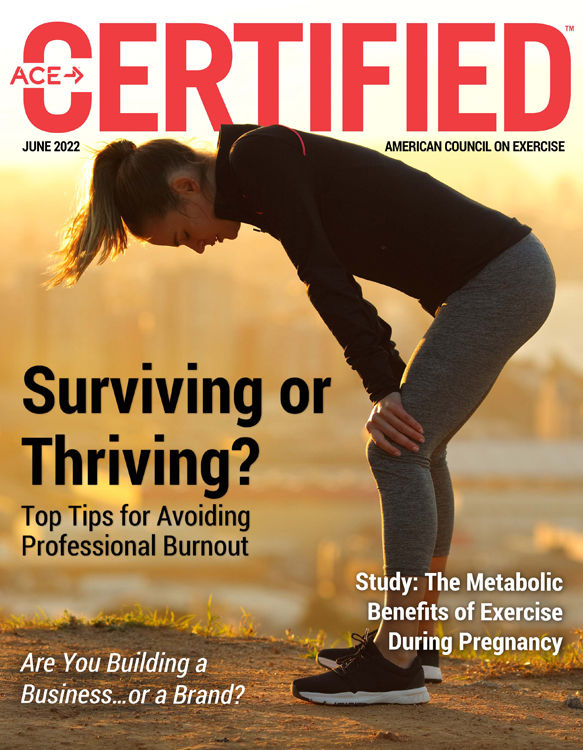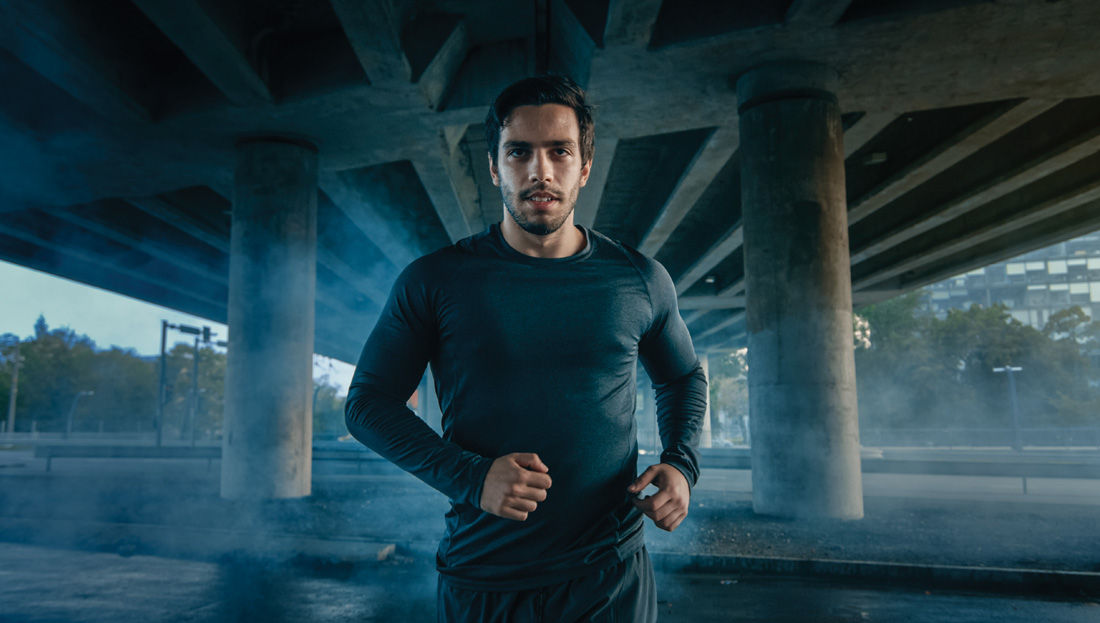
Summer in the United States means the arrival of various conditions that can pose a number of significant challenges to outdoor activity and exercise. In the May 2022 issue of CERTIFIED, we examined the cardiovascular and thermoregulatory challenges of exercising safely on a warming planet in summertime weather conditions. Longer and hotter summer months are also associated with increased pollution and more potent seasonal allergies, which means that health and exercise professionals need to help their clients take extra precautions when exercising outdoors. This article outlines strategies that will help your clients perform outdoor summertime activities safely and effectively when pollution and seasonal allergies are at their peak.
The Health Risks of Air Pollution
Air pollution has been linked to a range of health problems and even premature death. For example, one study estimated that air pollution is responsible for more than 100,000 premature deaths each year. Large pollutant particles in the air can cause irritation and discomfort, while small, fine pollutants from sources such as auto exhaust or power plants can penetrate deeply into lung tissue and enter the bloodstream. Exposure to fine particle air pollution, a growing concern due to the increase in large wildfires across the Western United States, has also been associated with cardiopulmonary dysfunctions. The physiological responses and health risks attributable to air pollution are highlighted in Table 1.
Older adults and individuals with preexisting cardiovascular and respiratory conditions are particularly susceptible to the damaging effects of air pollution. Traditionally, compared to those living in rural settings, people living in urban areas have experienced the highest exposure to air pollution. That is changing, however, as a recent report from the World Health Organization warned that 99% of the world’s population now breathes air that exceeds internationally approved safe limits and that health is negatively impacted at much lower levels than previously reported.
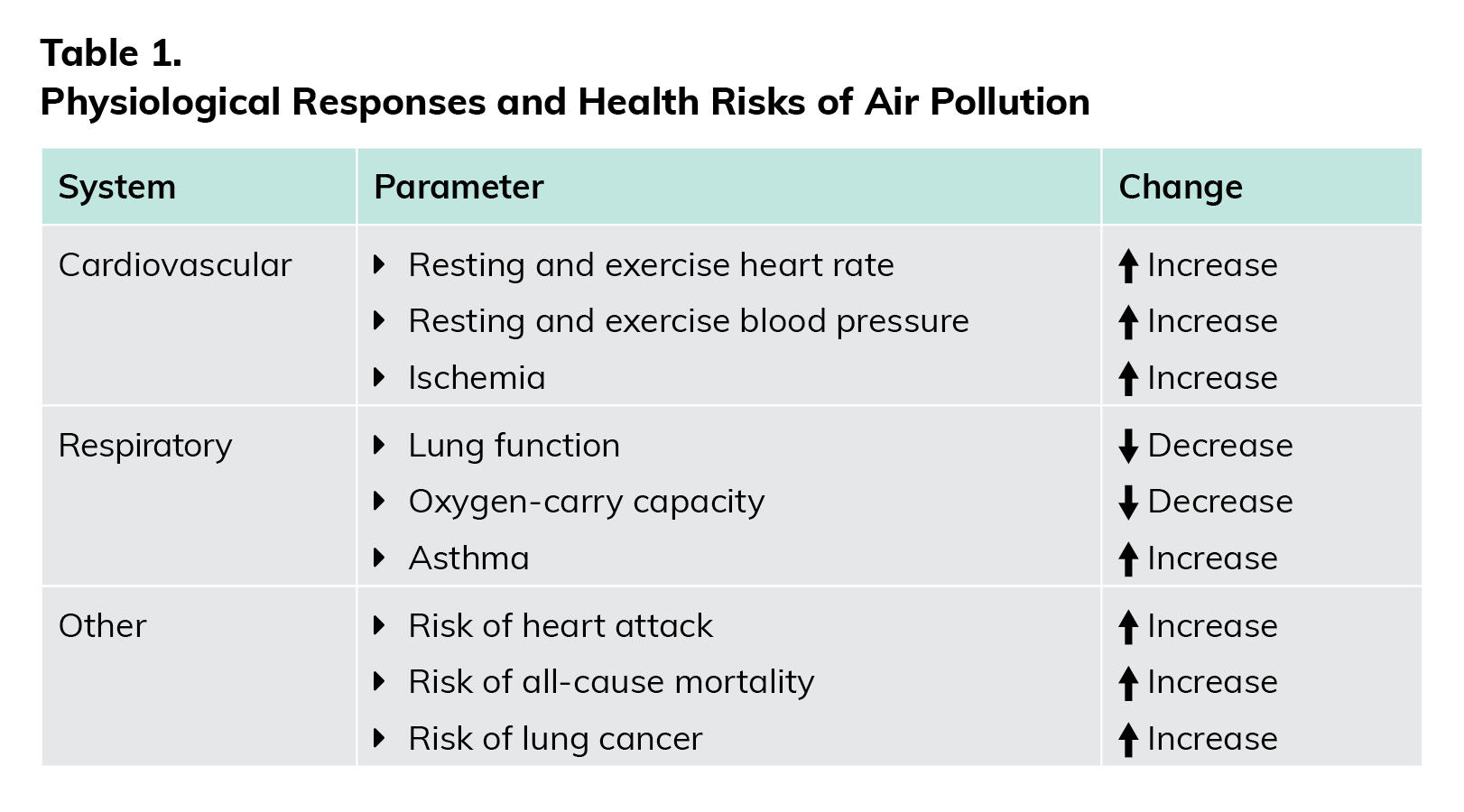
Warmer Weather Increases the Risk of Seasonal Allergies
According to the Asthma and Allergy Foundation of America, approximately 30% of adults and 40% of children suffer from allergies in the U.S. Allergy symptoms range from the mildly irritating, such as watery eyes, sneezing or rashes, to more serious medical conditions, such as difficulty breathing or anaphylaxis.
The fact that summers are getting longer and warmer means that allergy seasons are likewise becoming longer and more intense, according to a recent study. The researchers found that with warmer temperatures, pollen emissions could begin 40 days earlier in the spring and last an additional 19 days before high pollen counts drop. Grasses, weeds and trees that produce pollen are affected by a warmer planet and the researchers estimated that the amount of pollen produced could increase by 200% by the end of the century.
Strategies for Exercising Safely Outdoors
The overall physiological effects and health risks of air pollution and seasonal allergies are determined by the degree of exposure (or dose) to pollutants and/or allergens to which an individual is exposed. This dose is related to the quantity of pollutants and/or allergens in the air, the length of exposure and the amount of air breathed. The following strategies can help facilitate safe and effective exercise and mitigate risk from air pollution and seasonal allergies.
1. Understand the dose-response phenomenon.
There is a dose-response relationship between an individual’s risk of health complications due to exposure to air pollution and allergens and the following three factors:
- Concentration of air pollutant or allergen
- Duration of exposure/total time of exercise or physical activity
- Ventilation rate as determined by exercise intensity
An increased dose of any one (or combination) of these factors will increase a person’s risk. For instance, a higher concentration of ozone may lead to reduced lung function. Similarly, a client suffering from seasonal allergies will likely experience worse symptoms if cycling vigorously for several hours when compared to walking at a moderate pace for 30 minutes. Generally speaking, a good guide to follow is that as particle pollution levels increase, exercise intensity or duration should decrease.
Of the three factors listed above, you should be most aware of the concentration of air pollutants, as it is the most critical. Fortunately, there are excellent and easily accessible resources from the government to help guide decision-making on safe air pollution thresholds for exercise (Table 2).
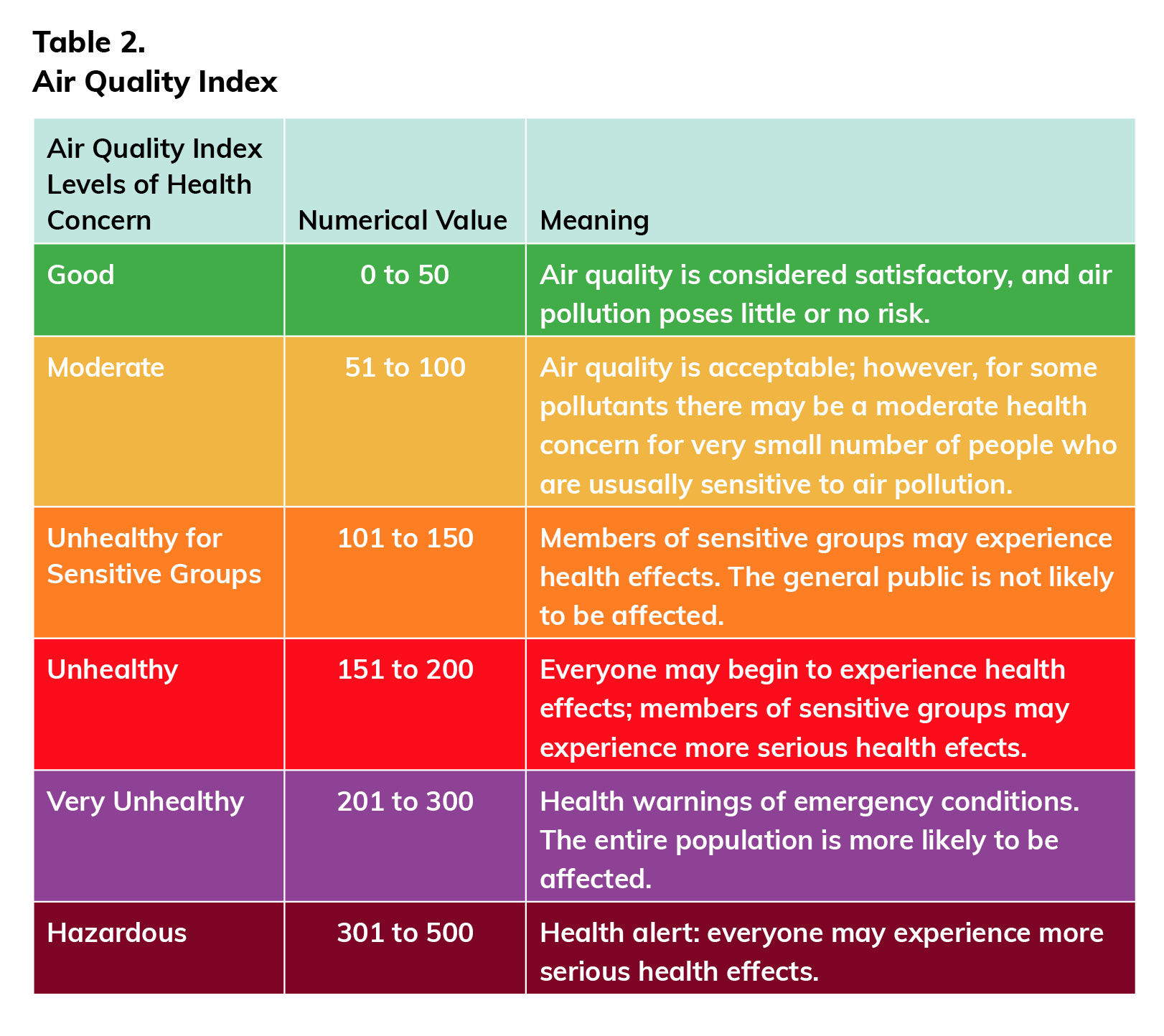
Source: https://www.airnow.gov/
2. Time of day and exercise setting are critical.
Practical suggestions can minimize the effects of air pollution and allergens. For example, this China-based study suggests that air pollution levels typically are lowest prior to 7am and after 8pm. For this reason, you might urge your clients to consider exercising early in the morning or late in the evening (depending on what works best for their schedule) to avoid the build-up of air pollutants associated with increased vehicular traffic. Likewise, pollen counts also peak at various times of the day. However, depending on the specific pollen, the peak time may vary and it’s important to check available resources and schedule workouts to avoid those high-pollen times.
Another practical consideration is to avoid exercising in high-traffic urban areas. Research suggests that simply moving a few city blocks away from a major roadway to an urban green space can dramatically alter the air quality. This helpful video can help you and your clients locate nearby green spaces for workouts and other outdoor activities.
3. Counter air pollution with antioxidants.
A free radical refers to atoms or groups of atoms that are highly reactive due to an unpaired valence electron (electrons in the outer shell of an atom that interacts with other atoms or becomes paired within the same atom). Once formed, free radicals can create a domino effect of reactions, which may cause damage to biological cells. Ozone is a common air pollutant that is known to cause free radical formation.
Antioxidants are molecules that can scavenge and safely interact with free radicals. Specifically, antioxidants can help mitigate free radical-induced negative chain reactions and protect cell membranes from oxidative damage. Antioxidants can be either endogenous (originating within the body) or exogenous (originating outside of the body via food or supplementation). The main exogenous antioxidants include vitamins C and E and beta-carotene (the precursor to vitamin A). Research highlights that antioxidant intake benefits individuals exercising in and chronically exposed to air pollution. Table 3 presents common food sources for antioxidants.
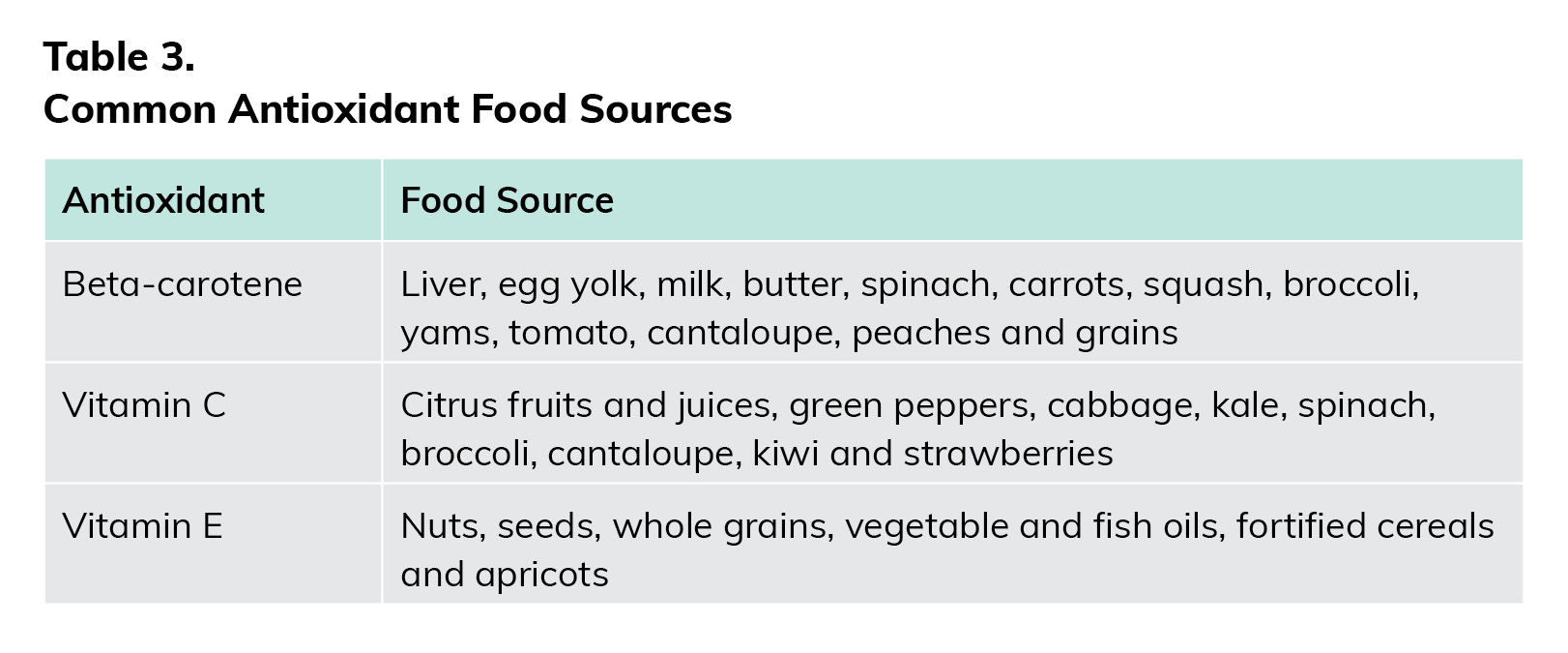
4. Wearing a face mask is a good countermeasure to prevent inhaling pollutants and allergens.
During the historic COVID-19 global pandemic, we have grown accustomed to the use of facial coverings to mitigate the spread of this highly contagious pathogen. Interestingly, research conducted prior to the pandemic showed that nanofiber masks can be an excellent countermeasure to prevent inhaling various air pollutants, while also allowing good air permeability. This is an important finding for health and exercise professionals, as a recent meta-analysis concluded that face masks can be worn during exercise with no impacts on performance and minimal impacts on physiological variables.
5. Understand the risk-reward balance between physical activity and air pollution.
As highlighted earlier, exposure to air pollution can lead to both unfavorable physiological responses and potentially long-term risks. Given that regular physical activity confers numerous health benefits, is there a point at which the risk of exercising in air pollution outweighs the benefits of physical activity for our clients? Available research suggests that modest daily bouts of physical activity, such as seen with active travel (e.g., walking or riding a bike to work), optimizes health benefits. It is only at longer daily bouts of exercise that there is an increased health risk due to air pollution. It is important to note that these higher volumes of daily physical activity are unlikely to be exceeded except in athletic populations. The risk-reward balance between air pollution and physical activity is highlighted in Figure 1.

The ACE Mover Method in Action: Help Clients Exercise Safely in Air Pollution and with Seasonal Allergies
As a health and exercise professional, you understand that longer and hotter summer months are associated with increased air pollution and more potent seasonal allergies. If your clients are unprepared, exercising in these conditions can bring unwelcome negative physiological responses and potentially more severe health risks.
Are your clients ready for the increased pollution and more potent seasonal allergies associated with summertime? Do they know where to find resources that will help educate them on peak pollutant and/or allergen times? What role do antioxidants play in countering air pollutants? The ACE Mover Method is a great approach to asking open-ended questions that help your clients identify how they feel about their preparedness for safely exercising in air pollution and with seasonal allergies. You may discover, for example, that they don’t know which foods contain antioxidants, or that they’re concerned about potential barriers that might prevent them from feeling comfortable with exercising outdoors in air pollution and/or with seasonal allergies. Or they may feel unsure about how to safely balance the intensity and duration of exercise relative to the concentration of air pollution.
Finally, collaborate and use your knowledge and what they have shared with you to come together and develop the best plan moving forward. Your clients may need help finding green spaces to exercise where air pollution levels will be lower, or they might be looking for some guidance on proper face mask choices. There may be days when the air pollution is too hazardous to safely exercise outdoors. Collaborate with your clients by reviewing the air quality index to make informed decisions.
Utilizing the ACE Mover Method sets you and your clients up for success because it helps them to be better prepared for performing outdoor summertime activities safely and effectively when air pollution and seasonal allergies are at their peak.





 by
by 